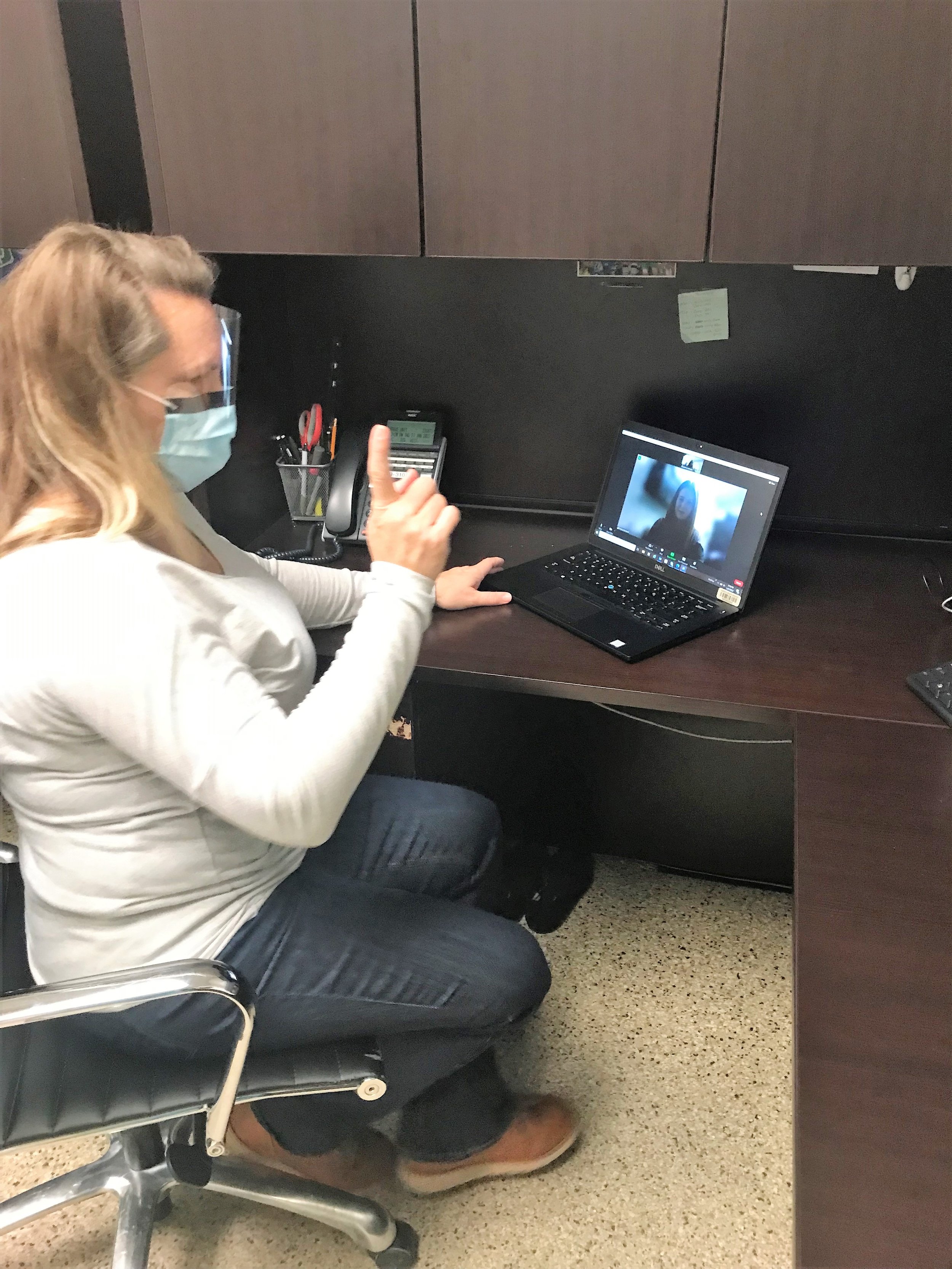Stroke Strategy, Early Supported Discharge team
Gail Elton Smith, Andrea Taeger, Kristine Smith, Sarah Baker, Sandy Bilyk, Kerri May, Tawnya Williamson, Sharene Lamson, Kelsey Blackwell, Ashley Thomas, Catherine Paterson
Prior to the COVID-19 pandemic, the Stroke Early Supported Discharge team at St. Mary’s Hospital adopted a virtual model of care. Even before COVID-19, they had already tested and established efficacy of treatment virtually to support a wide spectrum of patients. The early adoption of new service delivery positioned the team to readily adjust to the challenges of health care during the pandemic.
The virtual model allowed for the Stroke ESD team to continue to provide high-quality, in-home rehabilitation support while reducing exposure risk to clients and staff when the pandemic began. With time and cost savings from adopting the virtual model of care, St. Mary’s Hospital has been able to add long COVID-19 clients to their caseload. The work with this population has opened the door to the team’s participation in provincial research into enhanced remote monitoring and provoked provincial interest in the rapid spread and scale of the long COVID-19 early supported discharge model.
The expansion of ESD using virtual models breaks down geographic barriers to health care and increases equity of care, particularly to rural and vulnerable populations. It has also assisted with staff recruitment, enabling the team to on-board highly qualified staff who do not live locally.

